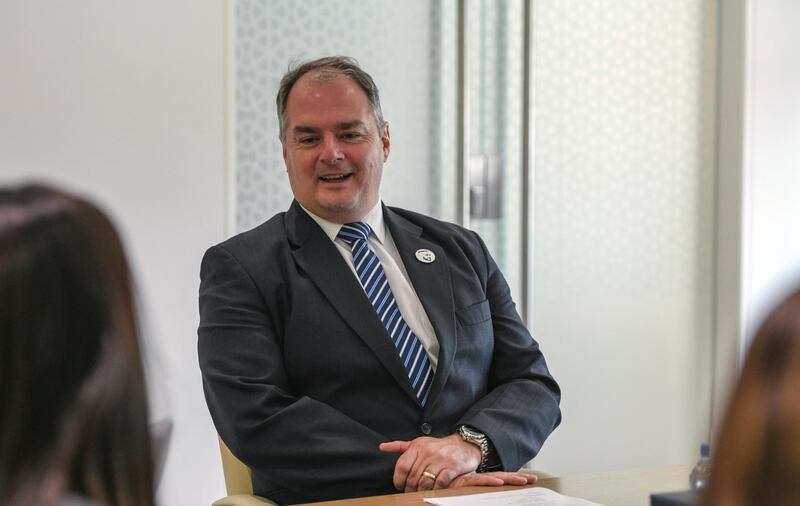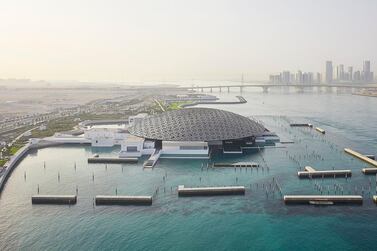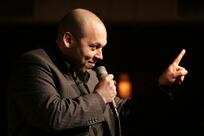Abu Dhabi Airports is focusing on increasing point-to-point passenger traffic to its hub to funnel visitors to the capital, rather than just transit through it, as part of the emirate's wider plan to boost tourism.
The airport operator is targeting an additional 1.4 million passengers to Abu Dhabi International Airport by 2021 to its current annual point-to-point traffic of 7.7 million passengers, Bryan Thompson, chief executive of Abu Dhabi Airports, said on Monday.
"We have seen that shift in terms of an increase in origin and destination [O&D] traffic, which is good for Abu Dhabi; it creates more visitors that stay in the city itself," Mr Thompson said. "It's not a huge shift but we have seen an increase in passengers starting to spend more time here."
Abu Dhabi is focusing on developing its tourism sector as part of a push to diversify the economy and reduce reliance on oil revenues. The capital is looking to boost the number of visitors across the business, medical, cultural and cruise tourism sectors. In addition to Louvre Abu Dhabi, the emirate also reopened its oldest building, the Qasr Al Hosn fort site, as a museum. Abu Dhabi Airports' move is in line with its main customer Etihad Airways' increasing focus on serving Abu Dhabi, where it’s based.
The Midfield Terminal Building, Abu Dhabi's long-anticipated new facility, is "on plan", Mr Thompson said, declining to provide a timeline for the opening or whether it would begin operations in 2019, in accordance with the last guidance from the operator.
MTB, as it is known, is in the phase of operational readiness and testing in various parts of the building, he said.
"There’s no capacity drive to move to MTB at the moment. In the south side, we have an airport that’s operating, it has got enough capacity to operate," he said.
MTB, which will span 742,000 square meters, will have a capacity of 45 million passengers a year when completed.
"We don’t want to let Abu Dhabi down when we open the Midfield. We will make sure we’re 100 per cent ready at the time of the opening, for ourselves and the airline to present Abu Dhabi in the best light," he said. "It's not just the airport's reputation that’s at stake, so we want to do this right."
The tally of annual passenger traffic at Abu Dhabi International Airport will remain little changed this year from 2018 as its main customer Etihad Airways undergoes a "structural reset", Mr Thompson said.
"Once the airline has reset itself, that its new strategy has come into place with the new fleet, Abu Dhabi [airport] will return to growth," Mr Thompson said. "We don’t see that happening in the next 12 months at the moment, we see a fairly straight line, we don’t see us losing traffic."
The airline has undertaken a strategic review of its operations aimed at helping it rebound from losses since 2016.
"We think 2019 will be no higher than what we’ve done in 2018. It’s a fairly flat year for us in terms of the consolidation of the market," Mr Thompson said. "What we will look to is increasing the origin and destination passenger numbers through Abu Dhabi."
The operator is still finalising figures for annual passenger traffic in 2018 and could not comment on actual numbers.
Abu Dhabi Airports is seeking investors to occupy space at the Airport City adjacent to MTB, where it would like to attract four and five-star hotels, and companies to set up headquarters in the mixed-use retail and commercial space.
The operator is preparing a proposal to potential investors that it will put to market by year-end, Mr Thompson said.
"It will be some of the most prime property in Abu Dhabi because its close to MTB, close to highways, and well connected," he said.
It is also looking for tenants in 8 million square metres of undeveloped space at Al Falah, a dedicated aviation district next to the airport, with possible additional clusters that support economic development, he said








